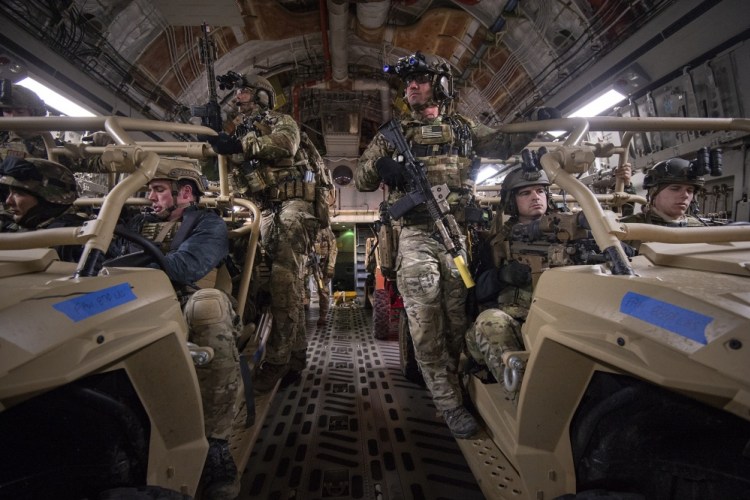The Air Force is making its own Special Operations Forces more independent by creating a Special Reconnaissance (SR) career field. The Air Force will be changing the Special Operations Weather Technician (SOWT) to SR.
According to the Air Force’s afspecialwarfare.com, the new SR operational role: Special Reconnaissance (SR) operators will be operating under the AFSOC team ‘Access’ packages. These teams include Combat Controllers and Pararescuemen whose purpose is to survey and prepare access for aircraft. These “left of bang” type of areas include setting up and securing aircraft landing zones, drop zones and assault zones, among other special interest areas.
SR will continue to provide short term weather forecasting to assist in operational planning. But the weather component is expected to move from a core to a subset skill as SOWT transitions to SR. They will utilize advanced recon techniques such as cyber collecting for air and ground assets. These operators will specialize in ground-based ISR meshed with Air, Space and Cyber capabilities.
In a major development, the Air Force Special Operations Command (AFSOC) changed the Special Operations Weather Technician (SOWT) career field to Special Reconnaissance (SR).
The Air Force has debated the future of its battlefield airmen for some time. SOWTs were seen as unnecessary with the advent of weather forecasting technology. Earlier in 2018, the service released a memorandum describing the current challenges and explored possible improvement opportunities to become more effective. “Bottom line, a fully leveraged Air Force ground maneuver element eliminates the need to ask another service to do what the Air Force should do ourselves,” the memo states. This conclusion indicates a desire for more independence. The document was signed by the Air Force’s Vice Chief of Staff, Gen. Stephen Wilson.
As of now, the battlefield airmen designation includes:
Pararescuemen (PJ)
Combat Controllers (CCT)
SOWT
Tactical Air Control Party (TACP), which are considered Special Operations
The Survival Escape Resistance and Evasion and Explosive Ordinance Disposal career fields also fall under the battlefield airmen designation but are considered combat support and not SOF.
The SR pipeline is very similar to PJ and CCT. Candidates for all three career fields attend the same selection and assessment program at Lackland Air Force Base. Thereafter, they progress through a succession of schools:
Pre-Dive and Dive
Jump
Military Free Fall
SERE
Reconnaissance
Combat Control
Advanced Skills Training
From the available information, it appears the main mission set of the SR field is to provide environmental reconnaissance capabilities to commanders. SR operators would also specialize in ground Intelligence, Surveillance, and Reconnaissance missions. Additionally, they’re still capable of combat weather forecasting operations.
Career field changes are expected to begin in April. The financial incentive for applicants is strong, with a $10,000 signing bonus.
The AFSOC even established the 330th Recruiting Squadron to attract more applicants and ensure they’re suitably prepared for the rigorous selection programs. Master Sgt. Michael Williams, who’s a flight chief with the 330th Squadron, said “we’re just trying to be realistic with them from the very beginning. Our candidates, whenever we bring them into our program…we can usually have them ready, passing the physical fitness standards, depending on their mental capacity…and resiliency, in about three-to-four months.”
To read the entire article from Newsrep, click here:
Photo: Soldiers with 2-20th Special Forces Group (Airborne) as well as other members of the special operations community prepare to conduct a mock-nighttime assault on the Grenada Dam in Grenada, Mississippi January 20, 2019. The exercise involved a simultaneous assault from multiple points, with the intent of gaining control over an insurgent-held dam. Southern Strike 2019 is a large-scale, joint multinational combat exercise that provides tactical level training for the full spectrum of conflict. It emphasizes air dominance, maritime operations, maritime air support, precision engagement, close air support, command and control, personnel recovery, aeromedical evacuation, and combat medical support. Air National Guard Photo by Staff Sgt. Christopher S. Muncy. DVIDS.
